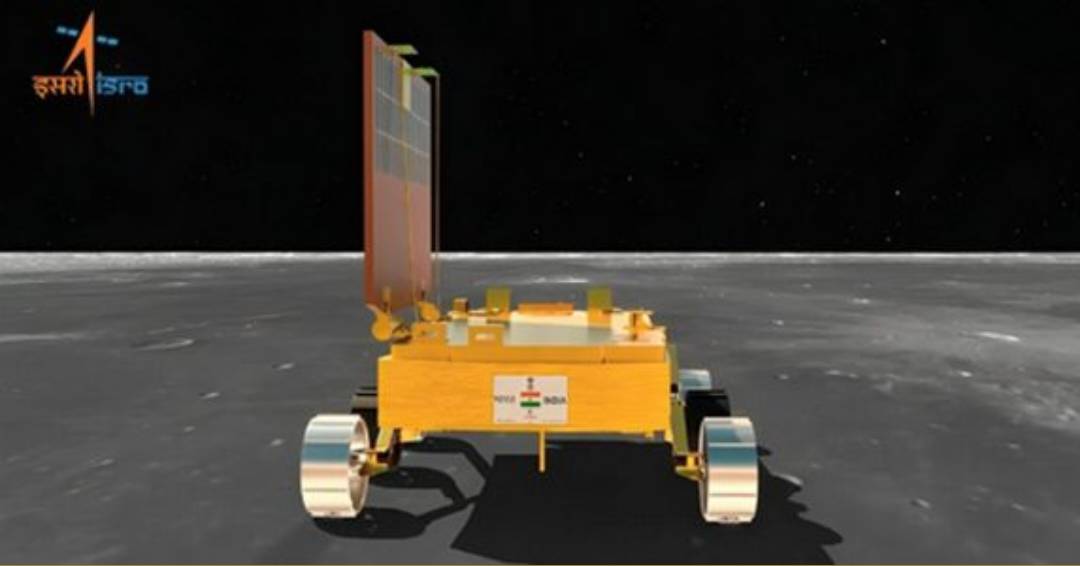
Certainly! The recent announcement from the Indian Space Research Organisation (ISRO) highlights a significant discovery made by the Chandrayaan-3 mission’s rover ‘Pragyan’. This discovery revolves around the presence of sulphur in the lunar region, which was confirmed using an instrument known as the Alpha Particle X-ray Spectroscope (APXS).
The APXS instrument, onboard the rover ‘Pragyan’, was able to detect the presence of sulphur as well as other minor elements on the Moon. What’s fascinating about this finding is that it raises questions and challenges scientists to develop new explanations for the source of this sulphur in the lunar area. They’re now considering whether the sulphur originates from intrinsic lunar processes, volcanic activities, or even meteoritic influences.
ISRO shared this groundbreaking news through a social media post, accompanied by a video that captures the rover’s rotation as it searches for a safe route. In a light-hearted tone, ISRO compared this exploration to a child playfully frolicking in the realm of the Moon, watched over by a loving mother.
The video reveals an automated hinge mechanism, which carefully aligns the APXS instrument’s detector head to be in close proximity to the lunar surface. This instrument is a key part of the 26-kg, six-wheeled, solar-powered Pragyan rover. This rover is equipped with scientific instruments designed to analyze the composition of lunar soil and rocks in the south polar region where Chandrayaan-3 successfully landed.
The APXS instrument is particularly well-suited for in-situ analysis of elemental composition on planetary bodies like the Moon, which have minimal atmospheres. It employs radioactive sources to emit alpha particles and X-rays onto the surface sample. When these particles interact with the sample, they cause the atoms present to emit characteristic X-ray lines corresponding to the elements they’re composed of. By measuring the energies and intensities of these X-rays, researchers can determine the types of elements present and their relative abundances.
Interestingly, APXS observations have not only confirmed the presence of sulphur but have also uncovered the existence of other intriguing minor elements, alongside the major expected elements like aluminium, silicon, calcium, and iron.
Additionally, the Laser-Induced Breakdown Spectroscope (LIBS) instrument on the rover has also confirmed the presence of sulphur in the lunar region. This discovery is undoubtedly generating excitement within the scientific community, as researchers analyze these findings in more detail to gain a deeper understanding of the Moon’s composition and its geological history.
The APXS instrument has been developed by the Physical Research Laboratory (PRL) in Ahmedabad, with support from the Space Application Centre (SAC) also located in Ahmedabad. The deployment mechanism for the APXS instrument was built by the UR Rao Satellite Centre (URSC) in Bengaluru.
Overall, this discovery is a testament to the advancements in space exploration and the valuable insights that robotic missions like Chandrayaan-3 can provide about celestial bodies beyond Earth.

Post Your Comments